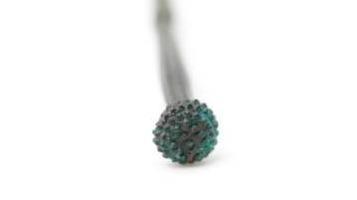
Donegal County Museum contains an ever-growing collection of artefacts representing a wide range of periods and topics.
Designated Museums
As a ‘Designated Museum’ under the National Cultural Institutions Act, 1997 and the National Monuments (Amendment) Act 1994, Donegal County Museum is legally entitled to retain objects on behalf of the State. The National Museum of Ireland will only lend objects for display to Designated Museums. Curators of Designated Museums are empowered to act on behalf of the Director of the National Museum to ensure that objects are investigated, reported and preserved as State property.
What is an “Archaeological Object”?
An Archaeological Object is an object " whether in a manufactured or partly manufactured or an unmanufactured state which by reason of the archaeological interest attaching thereto or of its association with any Irish historical event or person has a value substantially greater than its intrinsic (including artistic) value, and the said expression includes ancient human, animal or plant remains ". National Monuments (Amendment) Act 1994.
All archaeological objects found with no known owner are the property of the State. If you find an archaeological object you must report the find to the National Museum of Ireland, a Designated museum (like Donegal County Museum) or to the Gardai.
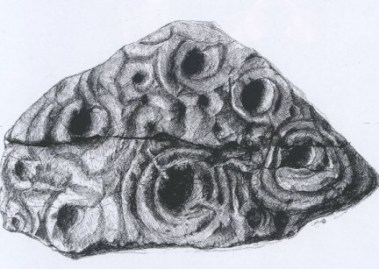
National Museum of Ireland
The National Museum of Ireland is the authority responsible for the care of all archaeological artefacts that are found with no known owner and they receive their powers from the National Monuments Act, 1930 and its subsequent amendments of 1954, 1987, 1994 and 2004.
Archaeological Survey of Donegal
The Museum is the home of the Archaeological Survey of Donegal that was published by Donegal County Council in 1983. The survey contains the original field notes, maps, plans and slides of the sites and monuments listed in the archaeological survey. Members of the public can consult the original files by appointment.
The survey contains a description of the field antiquities of County Donegal from the Mesolithic period to the seventeenth century and has 1,900 entries. An archive of material relating to the sites and monuments of the county was also created. This archive consists of 35mm slides, maps, plans, drawings and files (which includes field sheets describing each site) relating to the sites and monuments in the survey. This archive is in the care of Donegal County Council and provides more detailed information on each site than the information provided in the Record of Monuments & Places although it has not been updated since its publication in 1983. The survey and its archive can be consulted in the Donegal County Museum in Letterkenny.
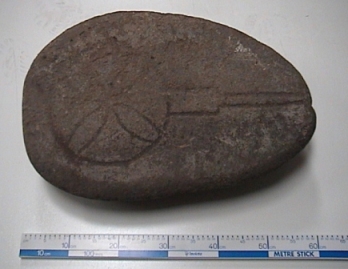
Record of Monuments and Places (RMP)
The Record of Monuments & Places, formerly the Sites & Monuments Record (SMR), is a statutory audit of archaeological monuments established under Section 12 of the National Monuments (Amendment) Act 1994. Structures, sites, features and objects are listed in the Record of Monuments & Places. The paper Record of Monuments & Places consists of marked-up Ordnance Survey six-inch maps and a manual listing basic information in relation to each monument or area included in the Record of Monuments & Places.
In County Donegal, there are over 3,000 sites on the Record of Monuments & Places and most of them are in private ownership. Sites in the Record of Monuments & Places are protected under the National Monuments Acts (1930-2004) and are indicated on the paper maps by being circled or boxed in as appropriate by a black line. While the circles or boxes indicate their location, they do not define their exact extent.
To find out what archaeological monuments are in your area and to consult the electronic version of the Record of Monuments & Places, consult the National Monuments Service of the Department of Arts, Heritage & the Gaeltacht website at: www.archaeology.ie
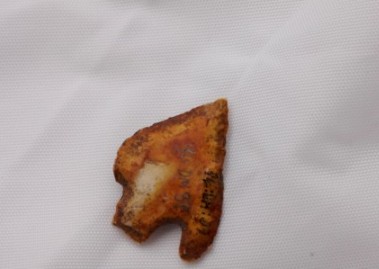
Recorded Monuments & Consent for Works
Where works are to be carried out on or close to a Recorded Monument or a Zone of Archaeological Potential (irrespective of whether planning permission is required or not) , then the person proposing the works must give two months notice in writing to the National Monuments Service of the Department of Arts, Heritage & the Gaeltacht prior to starting.
Diving on Shipwrecks
All shipwrecks over 100 years old are protected under Section 3(5) of the National Monuments Act 1987. A licence is required from the Department of Environment for diving on ANY protected wreck sites or for deliberate searches for underwater cultural heritage, for other archaeological activities on wrecks or underwater archaeological objects. Use of a metal detector is also forbidden.
Under this legislation the onus is on the diver to prove that he/she was not acting illegally.
A licence to dive may be obtained from National Monuments Service, Department of Arts, Heritage, Regional, Rural & Gaeltacht Affairs, Room G50, Custom House, Dublin.
Receiver of Wrecks (Revenue Officer)
All wrecks are owned by somebody. Material recovered from any wreck is to be declared to the Receiver of Wrecks. The Receiver will make enquiries as to the legitimate owner. Undeclared salvage is stolen goods and the perpetrator can be charged with theft. The Merchant Shipping Salvage and Wreck Act 1994, forbids the boarding of any wreck without the permission of the owner or master.
Finding Something
When any property is found there is an obligation to attempt to trace the owner. The usual method is to report the find to the local Garda station as soon as possible. It is an offence to even temporarily deprive somebody of their possessions under the Criminal Justice, Theft and Fraud Offences Act 2002, which is a major change from the old larceny statutes.
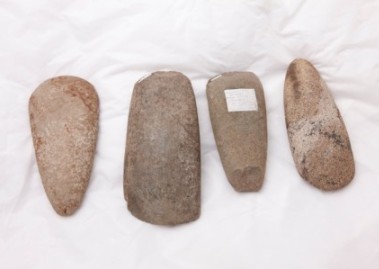
County Donegal was the first county in Ireland to have a full survey of its archaeological sites conducted and published in book form (1983). A previous survey of County Down (published 1966) had concentrated on medieval, post-medieval and industrial architectural monuments, with only a small selection of earlier sites included as examples. In the absence of any prospect of the national Archaeological Survey reaching Donegal in the 20th century, c.1970 Máiréad Dunlevy, from the county but working at the National Museum of Ireland, organised an ‘amateur’ survey conducted by voluntary members of the County Donegal Historical Society with the 110 OSI 6” maps provided by the County Council. In 1979 Dermot Walsh of the Donegal Regional Development Organisation proposed that that survey be put on a professional basis by Donegal County Council using money from the government’s Employment Guarantee Fund. About 35 persons, mainly young archaeology graduates, were employed at one time or another on the project. The fieldwork took place over 50 weeks between the summers of 1980 and 1981, followed by the preparation of the survey archive and published book. About 4000 sites were inspected of which 2,500 were deemed to date prior to the chosen cut-off date of AD1700. Where appropriate the sites were described, drawn, and photographed on 35mm film. This was a pioneering project in many respects, conducted before the availability of modern survey and IT equipment.
As part of this celebration, Donegal County Museum who hold the original Field Notes, survey drawings and slides recoginised that the slides and drawings were vulnerable to decay and required digitisation.
This ‘Archaeology 40’ project aimed to preserve the unique slides and drawings of the Archaeological Survey of County Donegal undertaken in the early 1980’s for present and future generations and to provide worldwide access to this collection, communicating the importance of our county’s archaeological sites through this archaeological digital archive.
This unique and important collection includes many never-before-seen photographs and drawings of archaeological sites surveyed during the first ever County archaeological survey undertaken in Ireland in the early 1980’s. They include many sites which are in private ownership and are not accessible to the public, along with sites which no longer exist, providing a snapshot of the preservation state of these sites 40 years ago.
By digitising this collection of slides and drawings, it ensures the permanent preservation of the images and plans and because of this, digital access to archaeological sites around County Donegal.
We recieved Heritage Stewardship Funding from the Heritage Council to digitise the slides and drawings and to create an accompaning exhibition which tells the story of the first professional Archaeological Survey and subsequent publication of the Archaeological Survey of County Donegal. It creates interest in and an opportunity to promote the preservation of archaeological sites in County Donegal.
Here are a sample of the Digitised slides
Archaeology 40 Exhibition images